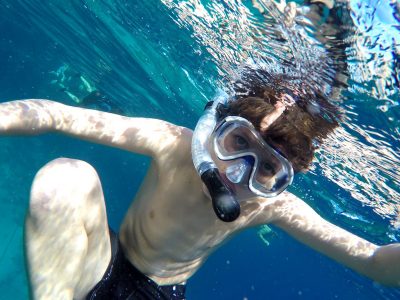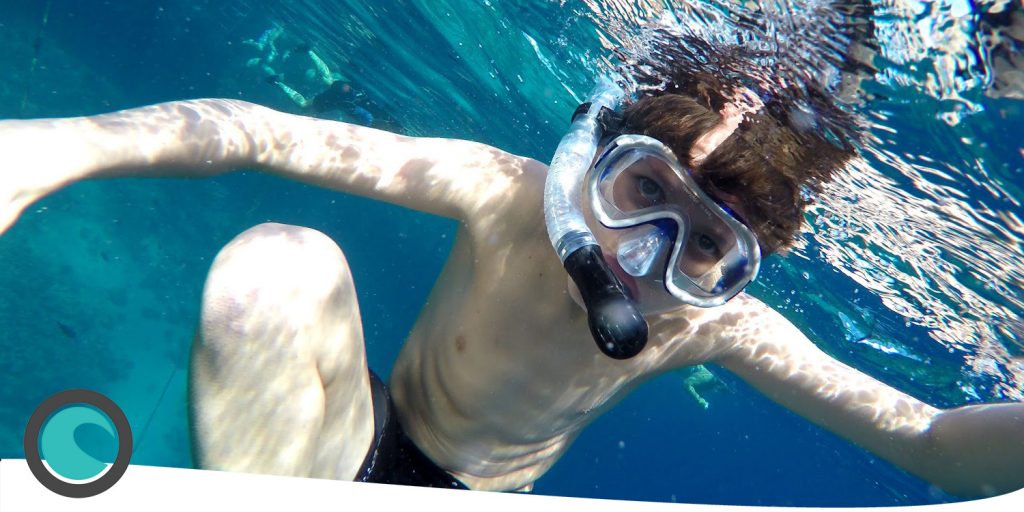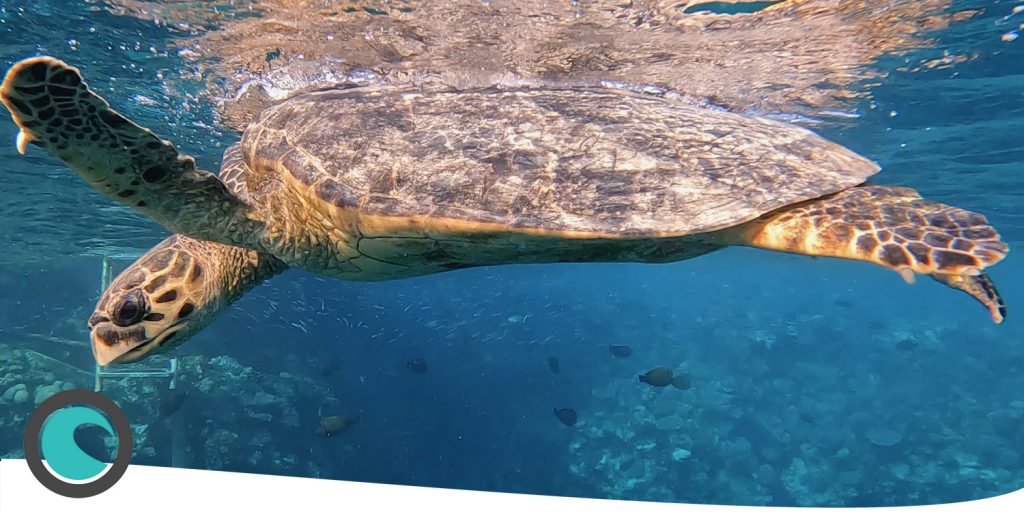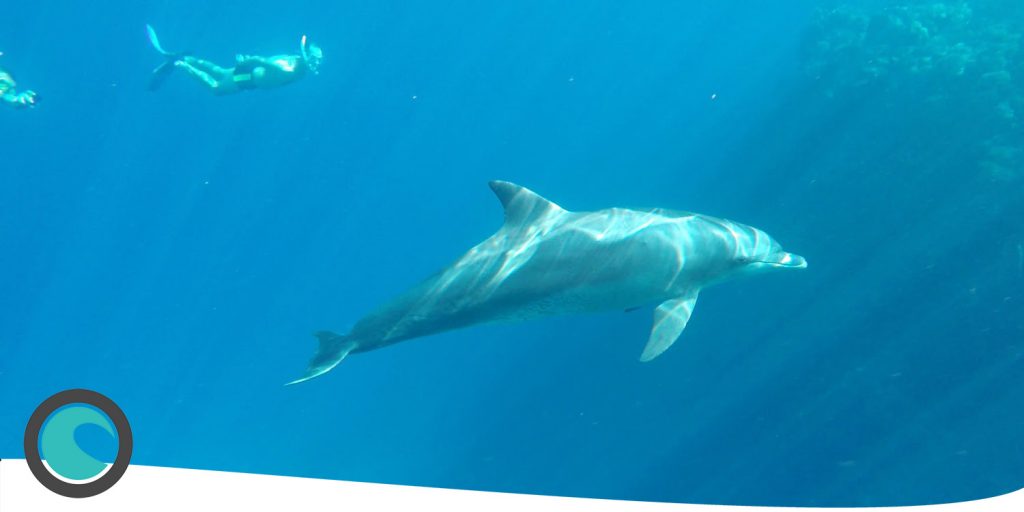Snorkelling is generally considered a beginner-friendly activity and typically doesn’t require extensive training. However, it’s important to follow some basic guidelines and have a good understanding of the equipment and techniques involved for a safe and enjoyable experience. Here are the key steps to get started with snorkelling:
- Familiarize Yourself with Equipment:
- Snorkel: At its simplest is a tube that allows you to breathe while your face is submerged.
- Mask: Covers your eyes and nose, providing clear vision underwater.
- Fins: Footwear that helps you move efficiently in the water.
- Full Face Mask: A recent invention combining the mask with the snorkel so you that don’t have to swim with a snorkel in your mouth
- Choose the Right Gear:
- Ensure your snorkel, mask, and fins fit properly and are comfortable to wear.
- Its important to get a mask with a silicone seal and tempered glass. Cheaper masks aren’t silicone and the seal isn’t very flexible and will get worse over time. Silicone remains very flexible and makes a good seal. Tempered glass means it won’t break if you dive down and it comes under pressure.
- Its important to make sure your mask fits properly. One easy way to do this at home is to put the mask on your face, without using the strap to keep it on your head, and breathe in through your nose and hold it there. It should stay in place without the need to breathe in further and should stay there until you breathe out. If it doesn’t then check you don’t have any hair trapped in the seal and try again. If you still fail then maybe the mask isn’t for you.
- Full Face Masks can be dangerous, they are banned in some countries, states, resorts and excursion companies as might not expel air effectively which has already been breathed. “When CO2 levels increase in the mask, users may experience headaches, panic, dizziness, and unconsciousness, which of course can be life-threatening when experienced in the water”. Deaths in Hawaii doubled on their introduction to the market in 2018. There have been design improvements since then but if you do want to use a full face mask it is important to check “its not fake, has a patented design and is from a reputable manufacturer
- Snorkels can be just a tube to breathe through, but some with different tops. From simple ones to prevent splashes of water going down the tube, to ones which have floats in the end that seal off the snorkel if you dive down so you don’t get any water in the snorkel. Also they can also come with purge valves which lets the water out of the snorkel where it settles at the bottom. As a beginner I would suggest spending a little bit more on a snorkel and get one with some or all of these features.
- Test the equipment in a controlled environment, like a swimming pool, to get used to using it.
- Brands such as Cressi, Typhoon or Beuchat would be a good place to start looking for quality masks and snorkels. Cheap normally does mean cheap, seals will the stiff and inflexible and leak, glass might not be tempered.Checkout our mask and snorkel sets here
- Practice Basic Skills:
- Learn how to clear water from your snorkel and mask, and how to use your fins effectively for swimming.
- Practice breathing through the snorkel in a safe environment, such as a shallow pool.
- Safety Precautions:
- Never snorkel alone; always go with a buddy or in a group.
- Be aware of the weather conditions and currents before entering the water.
- Currents are especially important as you can sometimes be so absorbed by what you are looking at underwater that you don’t realise that you have been dragged 100’s of metres from your original location and even with fins it can be hard to swim back.
- If its rough then it makes it especially difficult to snorkel and there is a good chance of being thrown into rocks or the reef
- Know the local marine life and potential hazards in the area you plan to snorkel.
- Do not dive down to any depth in a full face mask and snorkel as you are unable to pinch your nose to equalise the pressure build up at depth
- Choose the Right Location:
- Select a snorkelling location suitable for beginners, such as calm, shallow waters with good visibility and minimal currents.
- Beaches, lagoons, and designated snorkelling areas are often ideal for beginners.
- Start in Shallow Water:
- Begin in shallow water where you can stand and gradually get comfortable with the equipment and breathing through the snorkel.
- Relax and Take Your Time:
- Focus on staying relaxed and breathing steadily through the snorkel.
- Take breaks if needed, especially if you’re new to snorkelling or feeling anxious.
- Stay Calm and Enjoy the Experience:
- Once you’re comfortable, start exploring and enjoying the underwater world at your own pace.
While formal training is not always necessary for basic snorkelling, if you have concerns or want to enhance your skills and confidence, you may consider taking a short introductory snorkelling course or joining a guided snorkelling tour. These can provide valuable tips, techniques, and safety guidance from experienced instructors.
Some things to consider:
- Know Your Limits:
- Stay within your comfort zone and only venture as far as you feel confident. Do not push yourself beyond your abilities, especially if you’re a beginner.
- Check Weather and Water Conditions:
- Always check the weather forecast for incoming bad weather before heading out. Check the times of the tide. At high or low tide the current might be slack, increasing to its peak at 3 hours before or after high tide. Visibility will often be poor after a windy stormy day.
- Be Mindful of Marine Life:
- Avoid touching, disturbing, or provoking marine life. Some creatures can be dangerous or harmful, and respecting their habitat is crucial for your safety and the environment. Don’t feed the fish!
- Beware of Coral Reefs:
- Avoid touching or standing on coral reefs, as they are delicate and can cause injury. The sharp edges can cut your skin and damage the reef.
- Stay Visible to Boats:
- Wear a brightly coloured snorkel vest or buoy to make yourself visible to boats and other watercraft. Stay close to the shore and within designated snorkelling areas if there are any.
- Know Your Entry and Exit Points:
- Familiarize yourself with the entry and exit points before entering the water, and ensure they are safe and easily accessible
- Respect Local Regulations:
- Adhere to local rules and regulations related to snorkelling and marine activities to protect the environment and ensure your safety.
These are some simple tips to help you get the most out of your snorkelling adventure.
NB: All these pictures were taken by ourselves snorkelling in the Red Sea





